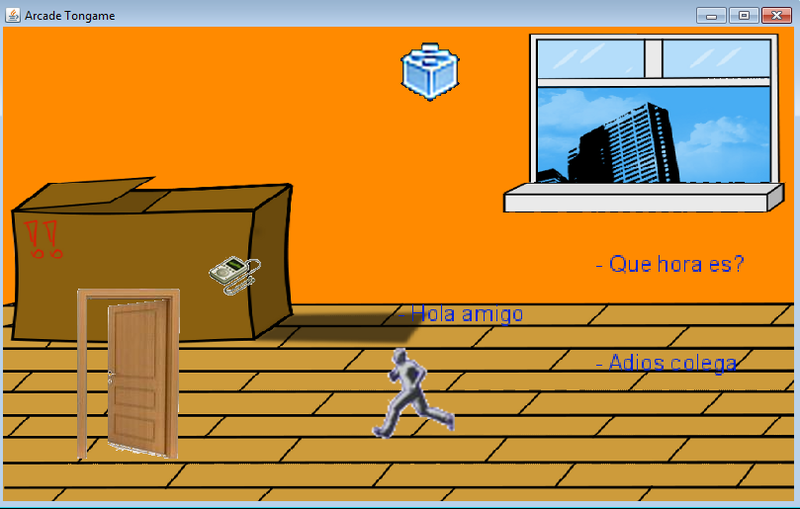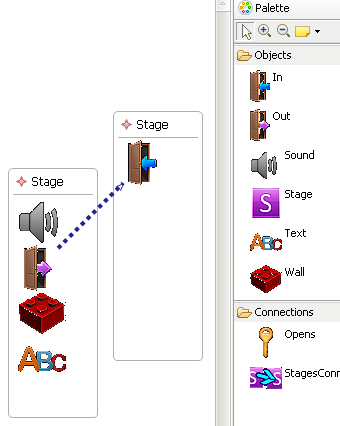The
current version of ArcadeTongame is already working, but it is still
incomplete and not as easy to use as it should be. In broad terms,
firstly you should generate the game configuration with the editor.
Then, you should use the Acceleo project to import the generated
configuration file and create the final game. The readme.md files of the projects explain it more detailed.
The objective is to generate the final game easily. Anybody without programming knowledge should be able to use this software when it is finished.
The objective is to generate the final game easily. Anybody without programming knowledge should be able to use this software when it is finished.
Description
It is a visual DSL to generate different games. Before to explain it, we should differenciate:
- User: is the person who makes the game, using the editor of games.
- Player: is the person who plays one of the created games.
The players of these arcade games have to move a character through a 2D stage and interact with different objects. Some of these objects will open a door, and if the character pass over an open door, it will take to another stage.

This is an example of a created game. When the player pass over the sound, it will sound "nihao." Then, the player has to pass over the correct translation, and the door will be opened.
The user, to create a game, can drag and drop stages and connect them through doors. Then, the user can add objects to the different stages. A object can be connected to a door, so it will be opened when the player pass over the object. Besides the doors, there are different object already available:
- Text: e.g. at the screen appears "the correct answer is B"
- Sound: e.g. when the player pass over this object, it sounds "what is the second letter of the alphabet?"
- Wall: it is an obstacle, the player cannot pass over it.
Examples of games that could be created:
- There is different words at the screen, and the user must pass over the one that has not relationship with the other. Then, the door will be opened.
- A question sounds, and the user will have to pass for one of the different words of the screen. Depending upon which word the player will pass over, a different door will be opened, and it will take to a different stage. It could be use to adapt the game to the level of the player, for example.
- But the possibilities are endless, and it could be used to build a game not related to anything about learning languages. Just let the user imagination run wild!
More technical information can be found here (Spanish):
http://wikis.uca.es/wikiPLII/index.php/Videojuegos_Educativos_DSL
